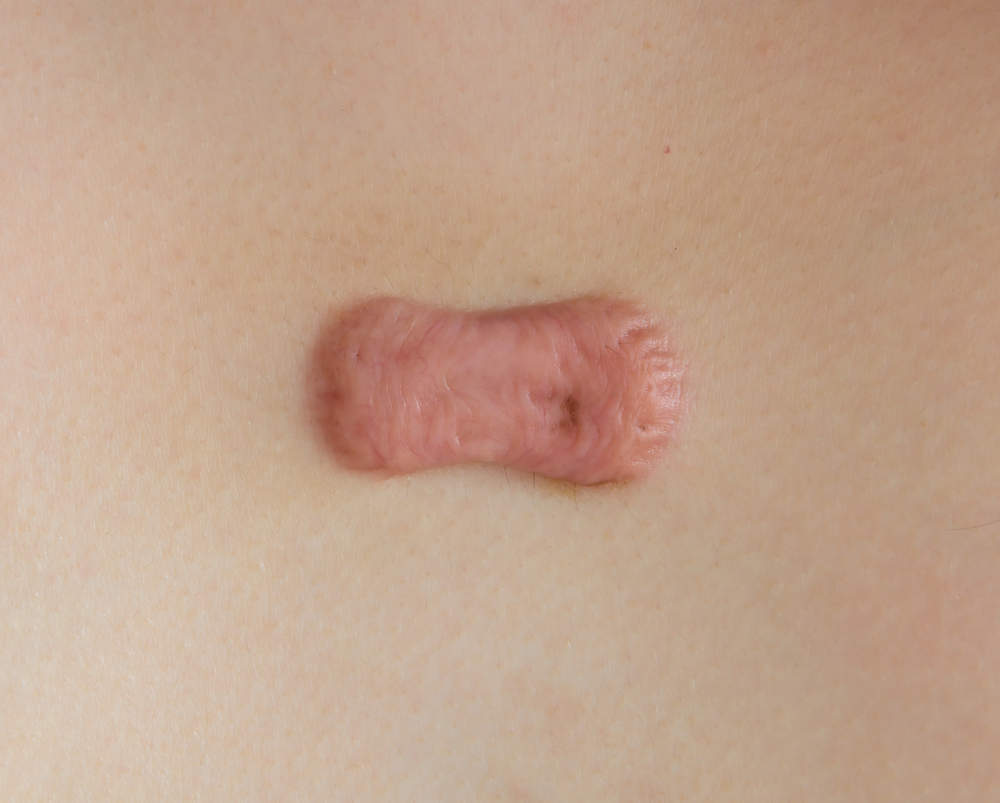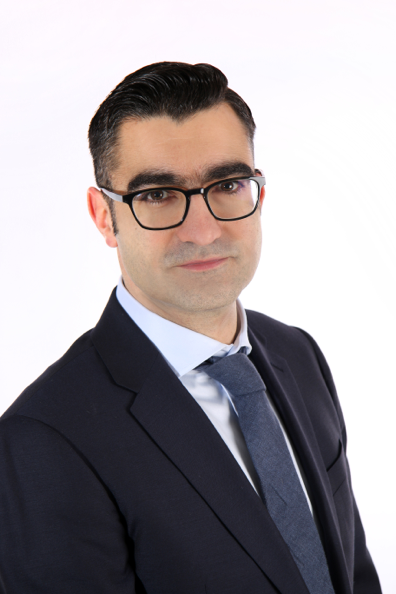
What is a keloid scar?
A keloid is a type of hypertrophic (bulky) scar that develops in the skin as a result of injury, infection or inflammation and spreads beyond the borders of the original field of skin damage.
The word keloid derives from the Greek word ‘chele’ meaning crab’s claw since some scars (especially those over the chest bone) have extensions resembling claws. It is now increasingly recognised that keloids represent the extreme spectrum of bulky scars.
Why do people get keloids?
Following insult to the skin like injury or infection, collagen is normally laid down as part of the healing process, but in keloids there appear to be excessive amounts of collagen deposited – resulting in thick and troublesome lesions.
The way different individuals form scars relates to a number of factors including
a) genetic predisposition (family history),
b) environmental factors, including complications in wound healing like infection
c) the presence of tension across the scar site; this explains the greater propensity for keloids to develop over the chest/shoulder/back areas.
Risk factors for keloid scars
- Young age (peak: 10-30 years)
- Family history (half of the affected individuals have a positive family history)
- Afro-Caribbean type skin (15-20 times more prone to keloids, compared to fair complexion)
Typical history and symptoms of keloids
- Shiny, rubbery skin outgrowths that can have significant impact on quality of life and lead to low self-esteem
- Common areas include the chest, shoulder/back, earlobes and suprapubic areas
- Painful in the centre and itchy where the keloid meets normal skin at the edges
- Can develop anytime after injury/inflammation to the skin – this can either be due to controlled events (e.g. body piercing/tattoos, vaccination, surgery) or skin diseases (e.g. acne, chickenpox, burns); in many cases, no inciting event can be identified before a keloid develops
- Unpredictable evolution; they can start or stop growing at any time following the original injurious event
Diagnosing a keloid scar
Diagnosis is most frequently reached via clinical examination and a suggestive history provided by the patient. It is very rare that a skin tumour can look like a keloid and a specialist might recommend a biopsy to rule out differential diagnoses.
Interesting facts about keloids
- In certain tribal communities, keloids are signs of beauty and part of tribal marking
- There is a well-established link between severity of keloids and the following:
- Puberty
- Pregnancy
- Hypertension
- Thyroid disorders
- Inflammatory diseases
- Keloid scars are treatable in a large majority of cases with satisfactory outcomes
Treatment options
These can be divided into those that aim to:
a) Remove the keloid lesion and replace it with a fine symptom-free scar
- Surgery and postoperative radiotherapy. This is the gold standard treatment for keloids, and there are many studies with long-term follow up to support this. Surgery needs to be performed by a specialised plastic surgeon and in such a way that tension is released from the wound. Radiation carries a very small risk of long-term development of cancer, which is less than 0.07%. This value is three times smaller than the risk of getting a chest malignancy from a diagnostic CT scan of the chest.
b) Decrease symptoms and bulk, but cannot change the outline of the scar
- Steroid injections. Benefits include a flatter scar with less pain and itch. Reported side effects include skin thinning, white translucent plaques, visible blood vessels, and changes in the colour of the skin.
- Steroid tape. This is a very useful addition to injectable steroids especially in thin scars and represents the mainstay of management in the Orient.
- 5 fluorouracil (chemotherapy). A combination of this cancer-fighting drug and steroid has been shown to be more efficacious than steroids alone.
What are treatment options for which there is limited evidence at present?
- Silicone. There is no strong evidence that silicone products can significantly reduce the size and symptoms of keloids; nevertheless, this product can be considered as prophylaxis to prevent the development of bulky scars.
- Steroid ointments. Clinical studies are not supporting the wide use of ointments alone for keloids and steroid injections/tape should be considered instead of appropriately selected scars.
- Cryosurgery. Freezing keloids with a specialised probe can be a valid option especially if the scar has a narrow base.
- Lasers. This is a form of treatment that is gaining in popularity and offered by a variety of skin clinics. The evidence base is not strong enough at present and the risk of making the keloid worse needs to be considered.
I already have a keloid scar, what should I do/avoid?
- Identify the precipitating factors for your keloid scarring (e.g. folliculitis, acne) and if possible treat them to prevent the development of new keloids.
- Avoid preventable injury to the skin, e.g. piercings, tattoos, unnecessary surgery.
- Tell your surgeon that you have a tendency for keloids if an operation is planned; certain steps can be taken to minimise the chances of getting a keloid postoperatively.
How do I make sure I see the right scar specialist?
Scar management is an upcoming niche subspecialty with a strong multidisciplinary focus. Here are a few things you could do/consider when looking for a scar specialist:
- Look at the specialist’s professional profile – have they got an interest in keloid/hypertrophic scarring? What is their specialist training and academic trail in the arena?
- Where does the specialist work? Is it a reputable clinic/hospital?
- What tools does the specialist use? Is he/she part of a multidisciplinary team with an interest in scar management to allow a choice among a range of treatment options?
- Is my specialist peer-reviewed and assured?
This article is for information only and should not be used for the diagnosis or treatment of medical conditions. myHealthSpecialist makes no representations as to the accuracy or completeness of any of the information in this article, or found by following any link from this article. Please consult a doctor or other healthcare professional for medical advice.

Mr Ioannis Goutos, Plastic and Reconstructive Surgeon
Book an appointment with Mr Ioannis Goutos